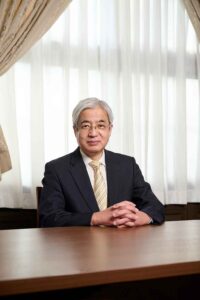The president of the Kyoto Institute of Technology (KIT) has corrected two of his papers and is set to correct another amid allegations of duplication – sometimes inelegantly referred to as “self-plagiarism” – despite a university committee clearing him of misconduct.
Employees at the university have accused president Masahiro Yoshimoto of duplication between 11 sets of his published papers – implicating 34 papers in total.
The employees submitted the allegations to the institution last October, backing their claims with an analysis by plagiarism detection software iThenticate. Two of these employees spoke to Retraction Watch on condition of anonymity, fearing a loss of support from their colleagues if they spoke publicly. Their concerns triggered an investigation at KIT, which cleared Yoshimoto of misconduct in January. However, the whistleblowers still believe the papers should be retracted.
The latest correction concerns a 2005 paper from a Japanese journal announcing the development of a novel semiconductor alloy. Just one year later, a second – now corrected – paper claiming to have achieved the same feat “for the first time” was published in the journal physica status solidi (a), with three overlapping authors from the original article.
This April, physica status solidi (a) issued a lengthy correction for the paper. The journal added the earlier publication to the reference list, as well as copyright information for the two figures which were reproduced from the original paper.
The correction also removed language in the article describing the work being done “for the first time”, and altered a line in the introduction stating “to our best knowledge there were no literature papers about [the topic]” to “there were few literature papers about [the topic]… except our recent one”. But the correction ended by stating the paper ultimately “provides new information” on the subject.
“That shouldn’t be a correction, that should be a retraction,” said one of the KIT employees in a call with Retraction Watch. “Because it is plagiarism, it is apparent.”
When they approached Stefan Hildebrandt, the editor of physica status solidi A, he said the editors of the journal and Wiley’s research integrity team had investigated the similarities.
According to Hildebrandt’s email, the Japanese journal permits authors to reuse any original figures, tables or parts of their own article provided the authors follow the copyright policy of the journal, which includes citing the original article as a reference, and adding copyright text along with the reproduced content – all information that appears in the correction.
Hildebrandt wrote the outcome “was mutually agreed upon by the various parties involved” and the correction “addresses concerns regarding potentially redundant publications in a case where no copyright violation was found.” In response to our questions about why the paper was corrected and not retracted, a spokesperson for Wiley, the journal’s publisher, reiterated Hildebrandt’s previous statement and added that the correction brings “the article into alignment with the copyright policy [of the Japanese journal].”
Last July, before KIT’s investigation, another journal published a correction to Yoshimoto’s work for a similar reason. The correction – for a 2007 paper in the Japanese Journal of Applied Physics – added references to reproduced data from another 2007 paper published by the same three authors, including Yoshimoto. The correction stated the work nevertheless “highlighted a critical new insight” which was absent in the previous paper. The editors of the journals have not responded to our questions in time for publication.
According to the anonymous employees, a third correction will be published for this 2002 paper. The editors of the journal did not respond to confirm the correction.
After Yoshimoto was put forward last year as the only candidate to succeed the university’s former president, Kiyotaka Morisako, the anonymous employees say younger colleagues alerted them to the duplication concerns because they felt their new leader’s behavior was not fair.
When the group formalized these allegations in October, Morisako formed an investigation committee to look into the claims. In January this year, the committee concluded that the allegations did not constitute misconduct. Yoshimoto, who has not responded to requests for comment, became KIT president in April.
According to a translation of the verdict, the committee found the papers that appeared to be duplicates in fact “contained different knowledge and novelty” from the earlier papers. The committee also determined Yoshimoto and his co-authors had not duplicated, since they had made appropriate citations and the similarities were within an acceptable range.
The investigation’s findings are not publicly available. The anonymous employees have tried to obtain the full report from university officials and Japan’s ministry of education, but have so far been unsuccessful.
The public verdict lacked “any rigorous explanation,” the employees said. “This lack of transparency and accountability raises suspicions and underscores the urgent need for public attention and further investigation.”
“This is an extraordinary situation in which a university tries to cover up research misconduct without disclosing the situation,” the anonymous employees wrote in an email. “The impact of this situation on the trust of our research community cannot be overstated.”
Like Retraction Watch? You can make a tax-deductible contribution to support our work, subscribe to our free daily digest or paid weekly update, follow us on Twitter, like us on Facebook, or add us to your RSS reader. If you find a retraction that’s not in The Retraction Watch Database, you can let us know here. For comments or feedback, email us at [email protected].
